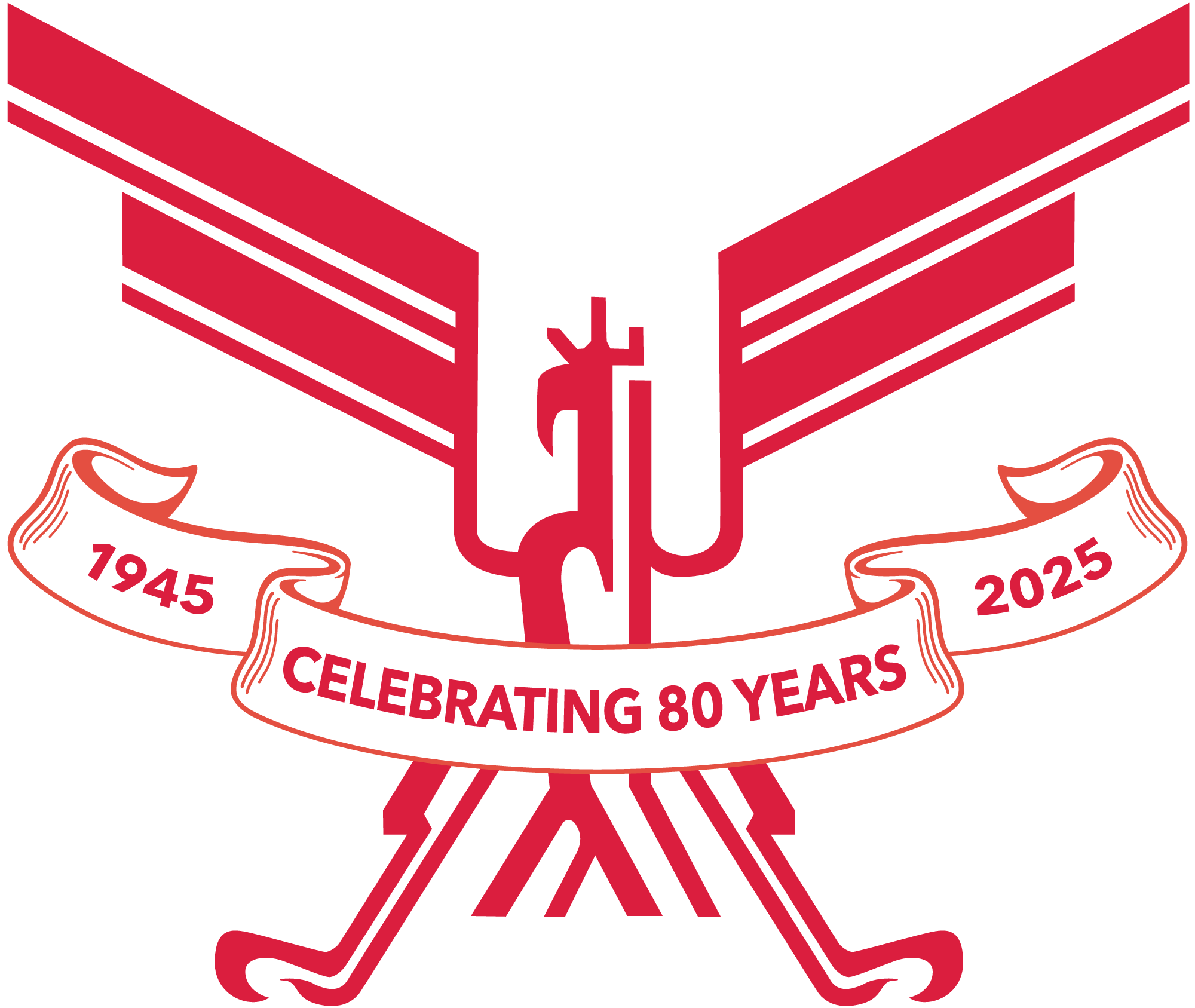The Building has to Come Down: How to Save the Mural
In Derby, New York, a dozen miles south west of Buffalo, a large mural by Józef Slawinski has, since 1967, graced a the side of building which is now scheduled to be demolished. Exposure to Western New York’s inclement winter weather for all these years has damaged the mural, but not beyond restoration. Executed in a four color four layer demanding sgraffito technique. the mural is a fine example of the artist’s work.
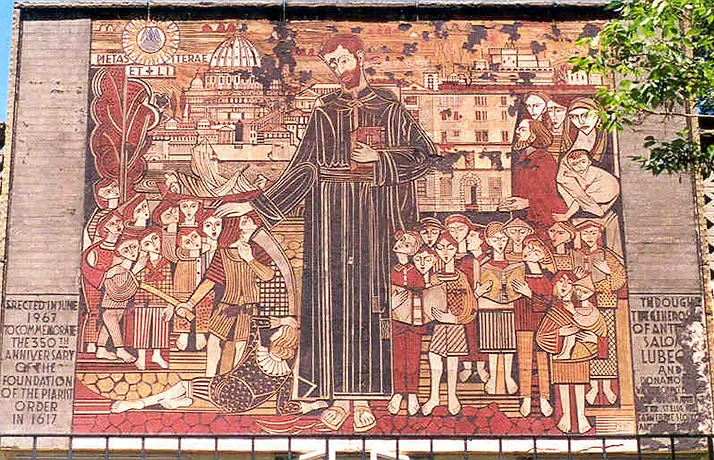
Given the large size of the mural, removing it from the building, transporting it and restoring it looms as a large undertaking. Upon the urging of Buffalo Common Council member Joseph Golombek and the Director David Granville of the Buffalo Arts Commission, the Board of Directors of Polish Arts Club of Buffalo decided to try to save the mural, have it removed, restored and re-erected at an appropriate location in the City of Buffalo. It is re-erected on the campus of The State University of New York College at Buffalo.
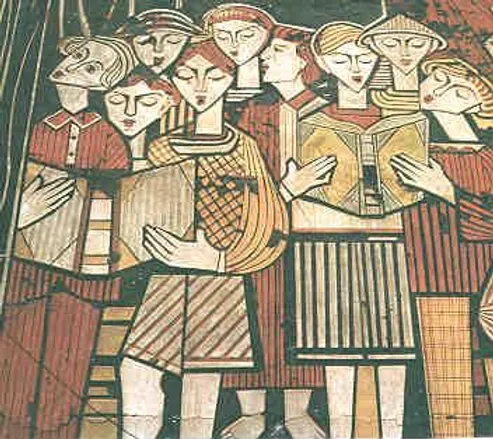
The Artist: Western New York has the distinction of having a number of its public buildings decorated by Józef Slawinski, a talented Polish-born muralist of wide experience who had studied the Etruscan art of sgraffiti in Italy. Traditionally, sgraffiti are made by covering an area with two coats of cement, the bottom one being black, the top one white. Then, while the cement is still wet, portions of the top layer are removed (scratched away) thereby exposing the black layer to form a sculpted image or pattern. Slawinski advanced the technique by increasing the number of layers from two to four, one of the additional layers being red, the other yellow. In this manner he was able to create multicolored sgraffiti images. His use of this technique rendered his work unique in the United States.
He first visited Western New York in 1962-63 at which time he created several sgraffiti. He returned to Poland, but was brought back in 1964 by the Franciscan Fathers in Athol Springs on an immigration visa to decorate two chapels being built at the Friary there. To obtain the immigration visa, the Fathers had to document to the U.S. Immigration and Naturalization Service that there was no other living artist in the United States capable of creating such artwork.
Graycliff and its Slawinski sgraffito: Buffalo is fortunate to have a number of buildings designed by the famous American architect, Frank Lloyd Wright. One of these is Graycliff, the summer residence that Frank Lloyd Wright built for Mr. Martin on the shore of lake Erie in Derby, some miles south of Buffalo.
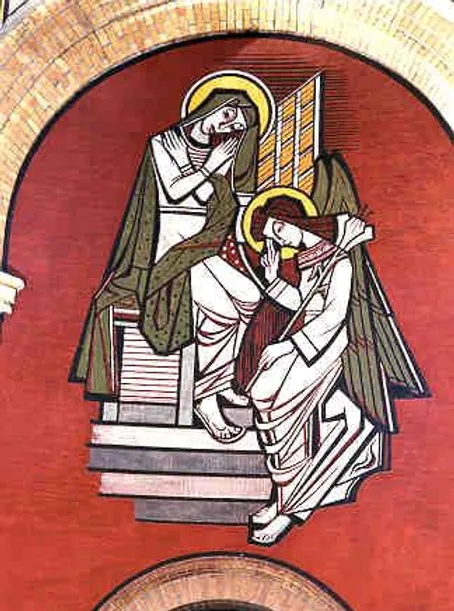
In the late fifties, Graycliff was sold to the Hungarian Piarist fathers who had left their country as a consequence of the 1956 revolution and its brutal suppression by the Soviet Army. They set up a school in Buffalo, named after the founder of their order, St. Joseph Calasanctius. The school gained a high academic reputation. At some point, the order bought the Graycliff property and enlarged it by erecting an additional building and, in 1967, commissioned Józef Slawinski. to make a large, 12 x 14 feet, sgraffito featuring St. Calasanctius. The location of magnificent sgraffito (see detail above) was to be the second story wall of the new building, that is the wall facing the entrance to the property.
With the passage of time the ranks of the Piarist Fathers dwindled. At the same time, local appreciation for the work of Frank Lloyd Wright rose significantly. It thus came about that a not-for-profit group – the Graycliff Conservancy – has acquired the property with the intent of restoring the house designed by Wright to its original condition. Since the building put by the Piarists obscures the view of Graycliff from the driveway and was erected without a building permit, it must be torn down. To be preserved, the Slawinski mural must be moved. Its re-erection, following restoration, at a location in the City of Buffalo will preserve this item of Western New York’s cultural heritage with every indication that it will become a tourist attraction. Father Jedrzejewski, of Assumption Parish in North Buffalo, has indicated his willingness to have the sgraffito housed in a vestibule facing the street on the outside of the Parish Church
A sgraffito mural of a liturgical symbol.
Józef Slawinski, Assumption Church, Buffalo, NY
The choice of Assumption Church is a natural one, since decoration of the walls of the church’s presbytery was the first commission that Józef Slawinski received in the United States. Working with Michal Baranowski, he created, using the sgraffito technique, five large scenes from the life of the Virgin Mary. Each of the scenes is surmounted by a second sgraffito which he created, this of a liturgical symbol at the center of a medallion-like design.
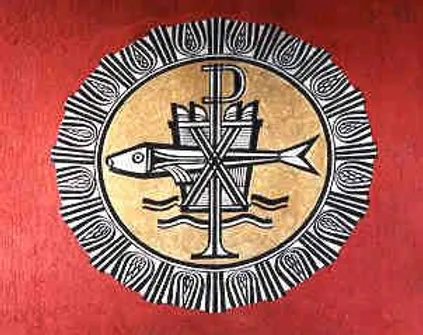
The early estimates for the removal, transportation, restoration, and re-erection of the mural run to about $50,000. The Club applied to the City of Buffalo and the County of Erie for grant-in-aid of $10,000 each towards this goal. With the strong support of Councilman Joseph Golombek, that sum has been appropriated by the City. The County application was accepted and appropriated . The Club will also be seeking funds from local donors, foundations and corporations.
